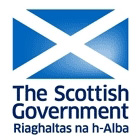Scottish National Dictionary (1700–)
Hide Quotations Hide Etymology
About this entry:
First published 1974 (SND Vol. IX).
This entry has not been updated since then but may contain minor corrections and revisions.
Quotation dates: 1710-1738, 1818-1955
[0,1,1,1,0,0,0,0,0,0,0,1,1,1,1,1,1,1,1,1,1,1,1,1,1,1,0,0,0,0]
UNICORN, n. Sc. usages:
1. One of the heraldic supporters of the royal arms of Scotland a.1603 and now incorporated on the dexter or right of the shield of the present royal arms of Great Britain as displayed in Scotland; a representation of such on coats-of-arms, public buildings, etc.Sc. 1738 J. Chamberlain Present State Scot. 160:
The Ignorance, or Partiality, or both, of the English Heralds, and common Painters, in not crowning the Unicorn, which supports the King's Arms.Sc. 1818 W. Kennedy Annals Abd. I. 407:
A Corinthian capital, surmounted by a unicorn bearing on its breast a shield, with a lion rampant.Sc. 1951 Hist. Mon. Comm. Scot. (City of Edinburgh) 146:
A background of thistles against which rises a unicorn in full relief.
2. The designation of one of the pursuivants in the court of the Lord Lyon King at Arms.Sc. 1710 J. Chamberlayne Present State Gt. Britain 671:
Pursuivants: 2 William Hume, Unicorn.Sc. 1900 J. B. Paul Heraldry 95:
The earliest mention of Unicorn is in 1426.Sc. 1930 Encycl. Laws Scot. IX. 338:
The titles [of pursuivants] at present in commission are Unicorn, Carrick, and Falkland.
3. A gold coin struck in the reign of James III and current in the 15th and 16th centuries at a value of 18 shillings Scots; so called from the figure of a unicorn, supporting a shield with the royal arms, stamped upon its obverse. Also comb. half unicorn.Ags. 1833 J. S. Sands Poems 37:
Angels, testoons, and unicorns, bonnet pieces.Sc. 1845 J. Lindsay Coinage Scot. 137:
The Unicorns generally weigh about fifty-eight grains, the half Unicorns in proportion.Sc. 1887 E. Burns Coinage Scotl. II. 151:
The coinages of unicorns that took place under James V.Sc. 1955 I. H. Stewart Sc. Coinage 64:
A very limited amount of gold unicorns.


